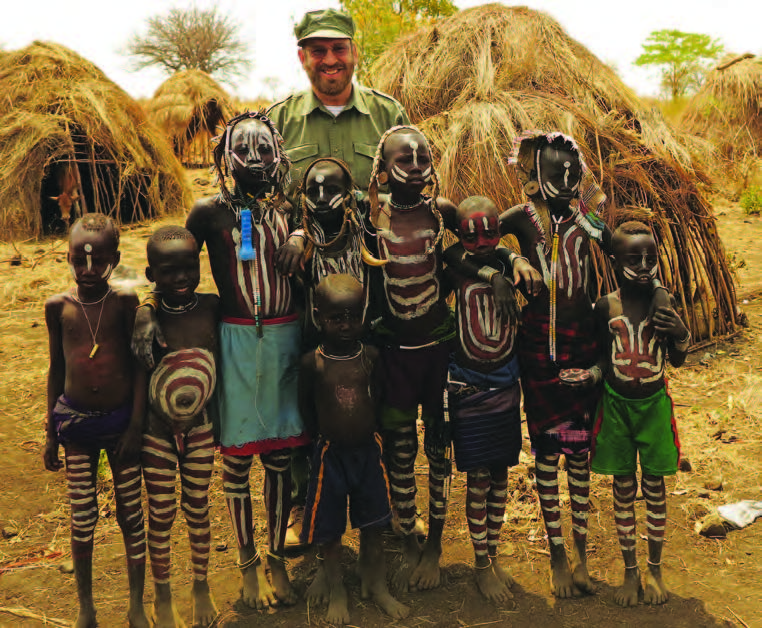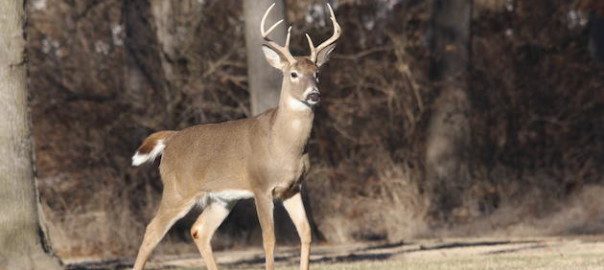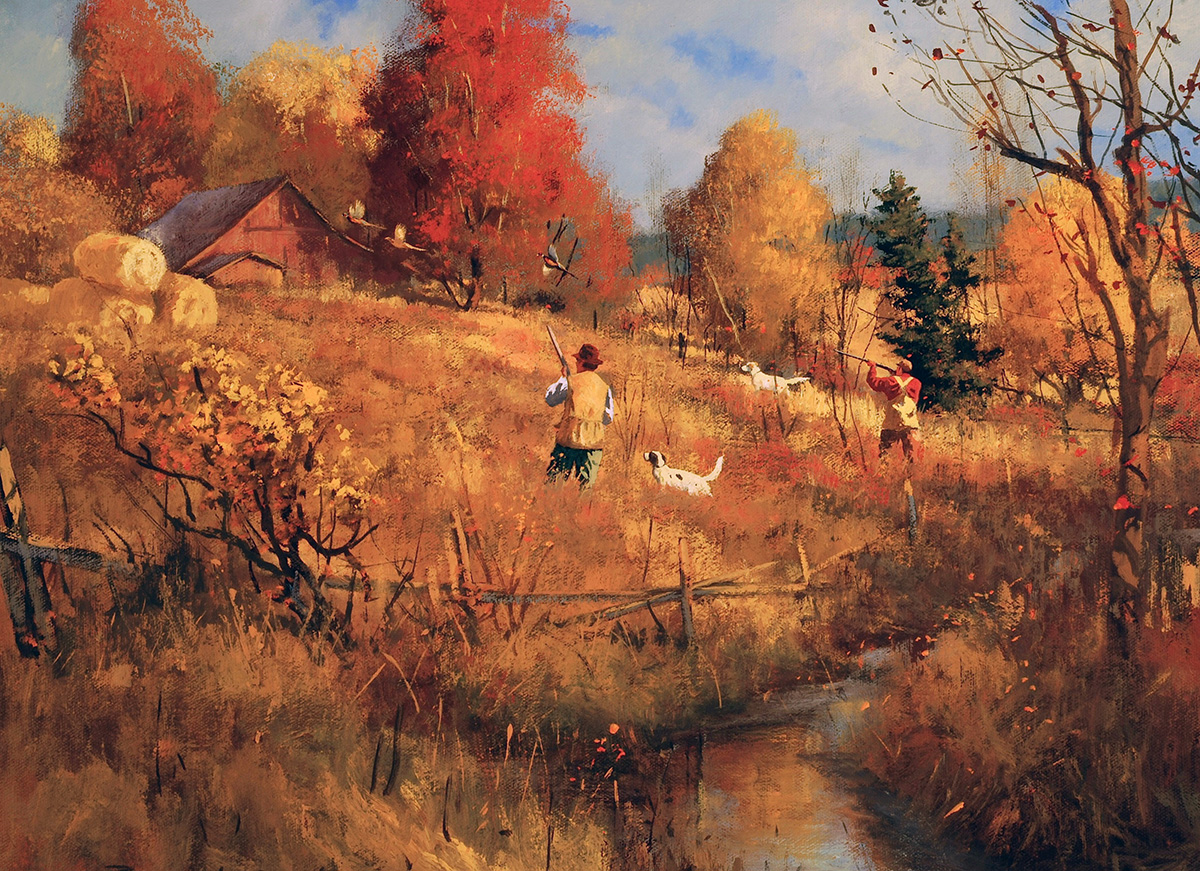In Zimbabwe, on his first African safari, he took with him a bag filled with $13,000 worth of medical supplies. With no idea of what he might encounter, he decided, quite randomly, to fill the bag with antibiotics and pediatric rehydration kits. He landed in the Omay region of the Zambezi Valley in the middle of a cholera outbreak where antibiotics and pediatric rehydration kits were desperately needed. As an evangelist minister, the serendipity was not lost on him.
To the right of Dr. Nalos’ front door in Bakersfield is a Mezuzah case. Among devout Jews, a Mezuzah case is always fastened to the right side of the front doorframe, the Mezuzah being a parchment containing certain verses from the Torah. It struck me as an odd thing for a Christian evangelist to have.
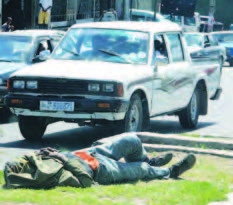
Homeless drifters reflect conditions in Ethiopia where most of its 100 million people are unemployed.
“My father was a holocaust survivor,” says Dr. Nalos. “He was born in Prague in 1924 to Jewish parents. When the Nazis marched in, my grandfather was one of the lucky ones. He was very successful and had a very lucrative factory, building furniture and cabinets for radios, so the Nazis allowed him to bankrupt himself and give them everything in exchange for visas out.
“They went to Italy and then to England and finally to British Columbia, where my grandfather announced the whole family was going to convert to Lutheran so they would never be persecuted again. He only intended it as a sort of symbolic act, but the funny thing was, it really took with my father. He was the only one, but he became a very devout Christian.
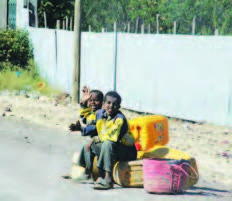
Children sitting next to roads reflect conditions in Ethiopia where most of its 100 million people are unemployed.
“But we were never raised on hatred. There was sadness at what had happened, not hatred. My dad would gather the whole family at Easter and tell the story of how God had saved our family and not to hate Nazis, but to rejoice in being saved. So later I tried to take that attitude to Africa and do that for Muslim and Jewish kids. They’re just kids, you know.”
Hunting was not a part of Dr. Nalos’ upbringing; no one in the family even owned a gun. But then one day a friend invited him to try skeet shooting and something clicked. From there, the journey followed predictable paths: dove hunting; taking his daughter, Olivia, dove hunting; then the two of them trying their hands at hunting deer and hogs, an experience that still gives him pleasure to recall.
“I had a lot of wonderful adventures with Olivia. I bought her a Weatherby Vanguard in .30-06 and a .300 Win. Mag. for myself. We had no one to teach us or mentor us, so I made every mistake you can think of. But then one day I bought a copy of a Peter Hathaway Capstick’s book, Safari: The Last Adventure, that had a chapter on how to book a safari. It was probably ten or fifteen years out of date, but I called a name listed in the back, Butch Walker, and I booked a safari in Zimbabwe.”
It was on that first safari where he took his bag filled with fortuitously chosen medical supplies.
“I went to Africa knowing nothing. We went off on safaris, Olivia and I, and we made friends with so many people. I’m talking about the trackers and the others who worked for the safari companies. Maybe some of them were simple, but they were responsible for my success—they made all my dreams come true. I fell in love with those people. To whom much is given, much is expected. It was as if God were saying, ‘Look at these people; I gave you all those adventures, now do something for them with your income and skills.’”
Fast forward to 2010.
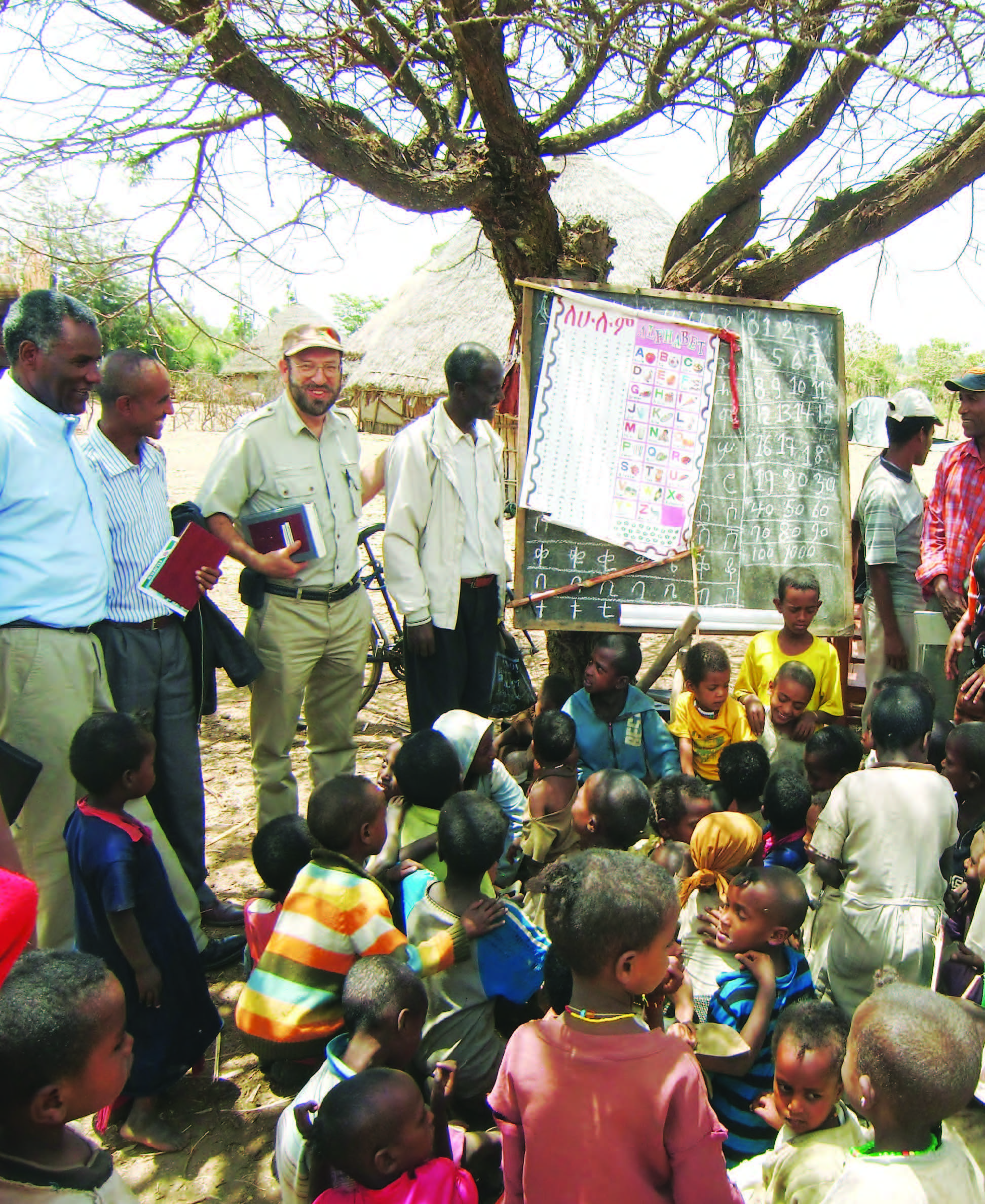
This 2002 visit to an outdoor classroom in Halaba, Ethiopia, convinced Dr. Peter Nalos (wearing cap) to personally fund four new schools.
“I was in the Cameroon, in the forest, and there was a little village of about one hundred people and maybe fifteen or twenty kids,” Dr. Nalos recalls. “I just happened to have a stethoscope with me, and they saw that, and right away they all wanted me to check them. The mothers wanted me to check their kids. Just a glance told me they were all suffering from kwashiorkor” [a severe form of malnutrition caused by protein deficiency and characterized by distended bellies and swollen feet and ankles] and there wasn’t a thing in the world I could do for them.
But there they were. I just wanted to get it over with. All I wanted to do was listen to their hearts and tell the mothers everything was okay, but it wasn’t okay and it wasn’t going to be okay and nothing I could do would make it okay.
“So I was listening to these little hearts and suddenly I heard a voice. Not internally. It wasn’t something I thought or heard inside my head, but something outside, someone speaking to me, and what I heard was: ‘If you want to see my face, you’re seeing it in the faces of these children.’”
That moment of revelation in the Cameroon resulted in a complete change of life for Dr. Nalos, which in turn resulted in his building schools throughout predominately Muslim areas of Ethiopia. It wasn’t a long or difficult step because Ethiopia, like all of Africa, is undergoing a transformation marked by modernization, industrialization and the inevitable confrontation between old and new.
It is difficult and controversial to pinpoint who is doing what and why in Ethiopia, but undoubtedly Chinese influence is being felt as Chinese industries outsource labor, taking advantage of the second largest population in Africa, after Nigeria’s. Ethiopia’s roughly 100 million people constitute a largely unemployed labor force, so American jobs outsourced to China are outsourced again to an even cheaper labor force. The result is roads and factories being built, as well as giant hydroelectric dams on the Omo River to power the factories. And it is the Omo River that is the lifeline of the remote and isolated southwestern corner of the country.
The South Omo Valley, isolated by hostile terrain and ignored by modern civilization, has been a melting pot for at least a thousand years as various tribes and cultures and ethnic groups have migrated into the area.
Depending on which source you choose to believe, there are somewhere between eight to two dozen distinct tribes representing three—or four, again depending on which source you believe—major linguistic groups, each with its own culture and its own traditions. The tribes vary in size from as few as 500 souls to as many as several hundred thousand; some are agricultural, some are pastoral, some are a combination of the two. All are described as primitive, a reflection of their extreme isolation.
The Omo River has its source in the Shewan highlands of central Ethiopia and drops 6,000 feet in 500 extraordinarily rugged and difficult miles before emptying into Lake Turkana on the Kenyan border. Two dams have already been built; a third, which will ultimately be the third largest hydroelectric plant in Africa, is under construction, although full funding has been delayed by environmental and human rights groups; and a fourth dam has been planned. The government claims water flow will be controlled to allow more consistent agriculture along the plains, benefitting the agricultural tribes. Critics claim the flow will be decreased, endangering the only remaining riparian forest in sub-Saharan drylands, depleting groundwater supplies in the Omo basin, and threatening half-a-million people in the various tribes with starvation and conflict.
The government claims the dam will improve the indigenous tribes’ lives by providing monoculture in the form of sugar and cotton plantations, and that opponents of the dam are opponents of a developed Africa who want the tribes to continue as a sort of living museum, complete with lip plates and decorative scarification and body paint.
Regardless of who is right and who is wrong, change is coming, and the affected peoples of the area can only choose what they feel is right for them if they have the education to enable them to understand the choices. One human rights group found that many of the indigenous tribes didn’t even know what a dam was. Hence the need for schools.
I asked Dr. Nalos how he went from malnutrition in the Cameroon to building schools and spreading God’s word in Ethiopia.
“I came home from that hunt, [in the Cameroon] and just a few months later a man approached [his church, Valley Bible Fellowship] and asked me to teach a purpose-driven church. I thought that was the answer, but we started in urban areas of Ethiopia, and I realized I would do better in the bush because I was more familiar with the bush.”
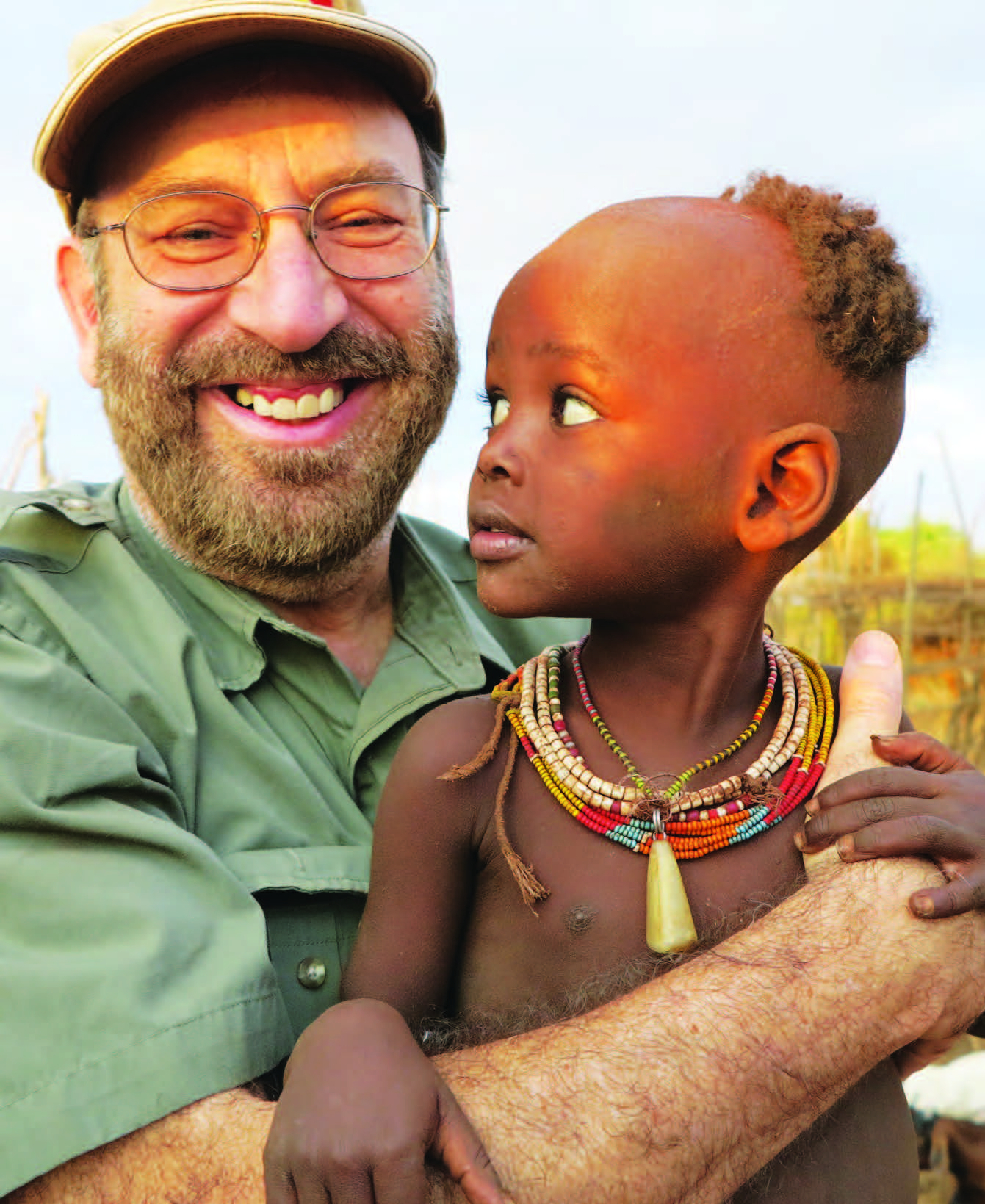
“Of all my pictures from Africa, this is my favorite,” says Dr. Nalos. “When I picked up this little girl of the Humar tribe, she immediately reached across to place her hand on my arm. It was a wonderful moment.”
As it transpired, the “bush” turned out to be the Muslim areas. Ethiopia is, for all intents and purposes, religiously bilateral. A fourth-century king made Christianity the official state religion, making it one of the oldest countries to establish Christianity as the national faith, and today, roughly two- thirds of the population belongs to some form of Christianity. Islam gained a foothold in 615 A.D., primarily in the east and in the south, and roughly one-third of the population is Muslim. A tiny minority, perhaps two percent of the population, follow traditional faiths, and most of those are in the extreme southwestern corner of the country, where the Omo River still provides a tenuous and precarious lifeline.
“I had the sense that God was telling me to build schools there, so we approached the local Imams for permission. The Imams were great. They told us, ‘Yeah, you bet, build a school right here.’
“So, there I was, building schools in Ethiopia and I thought to myself, ‘I’m a Christian, my family was Jewish, and I’m building schools in a Muslim area.’ I started to feel like Woody Allen.”
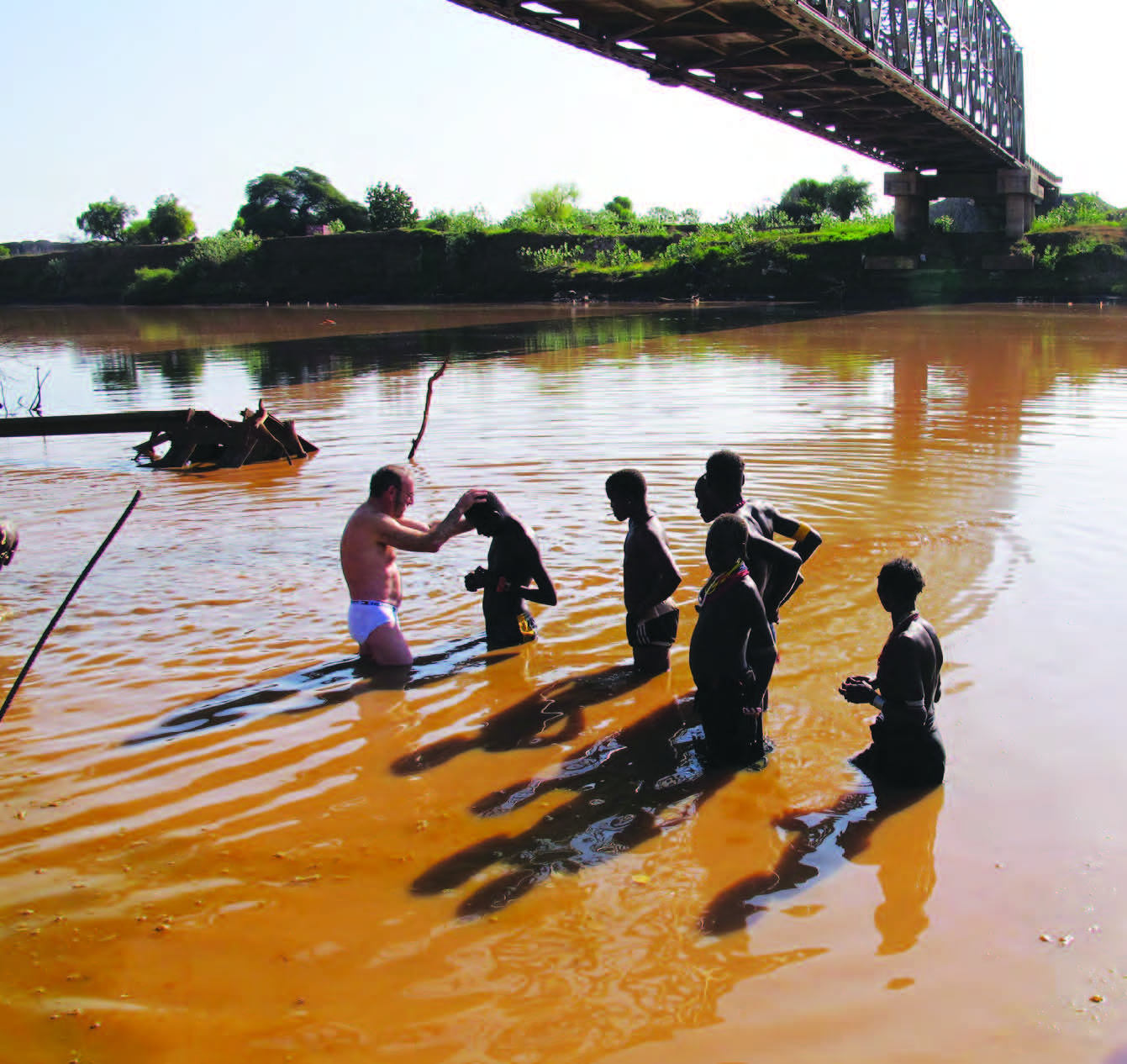
Dr. Nalos was conducting a Bible study for ten villagers along the Umo River. “Out of the blue they all said they wanted to accept Jesus, so we went down to the river where I baptized them. I’m in my underwear because I didn’t want to soil my clothes in the dirty water.”
Dr. Nalos no longer hunts, choosing instead to devote his time and resources to building schools and spreading God’s message. To date he and Valley Bible Fellowship have built 30 schools spread over a vast area. How vast? I called him a few days after Christmas and left a message on his phone. He got back to me in mid-January, sounding tired but happy, apologizing for the delay, explaining he had been in Ethiopia. He had driven more than 4,500 kilometers visiting all the schools.
Whatever changes may be coming to Ethiopia will change that world irrevocably, but at least the people whose lives are affected will know what a dam is and be able to make their own choices.
Editor’s Note: In 2016 Dr. Nalos started his own non-profit called “African Children’s Schools” to further his work in helping children all over Africa. His website is africanchildrensschools.org.
 Sporting Classics has compiled this remarkable anthology showcasing the best African adventures published in our award-winning magazine.
Sporting Classics has compiled this remarkable anthology showcasing the best African adventures published in our award-winning magazine.
Ruark, Capstick, Roosevelt, Markham – the legends in outdoor literature are all here, sharing their stories of deadly encounters with dangerous game, of bizarre run-ins with witch doctors, gorillas and man-eaters, of safaris into the uncharted wilds of deepest Africa.
Illustrated by world-renowned artist Bob Kuhn, AFRICA features more than 400 pages of unforgettable stories by some of the finest professional hunters and writers of sporting adventure. Shop Now

